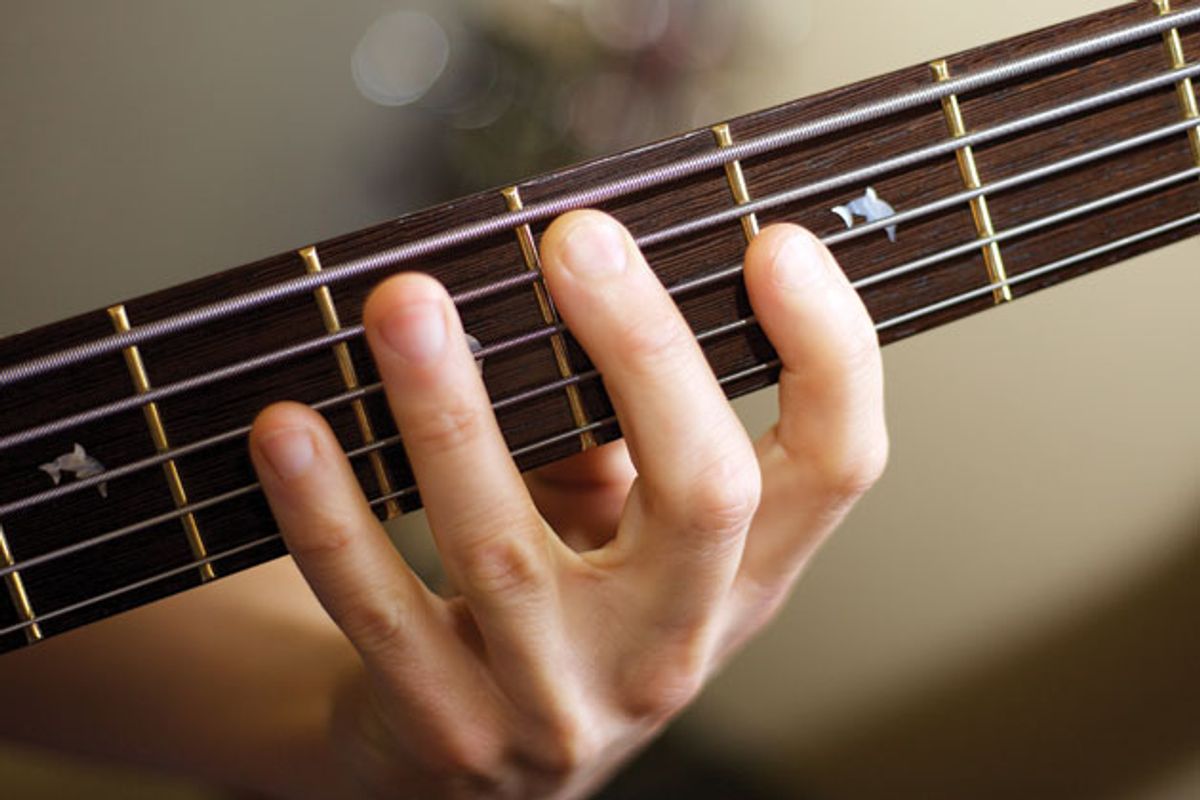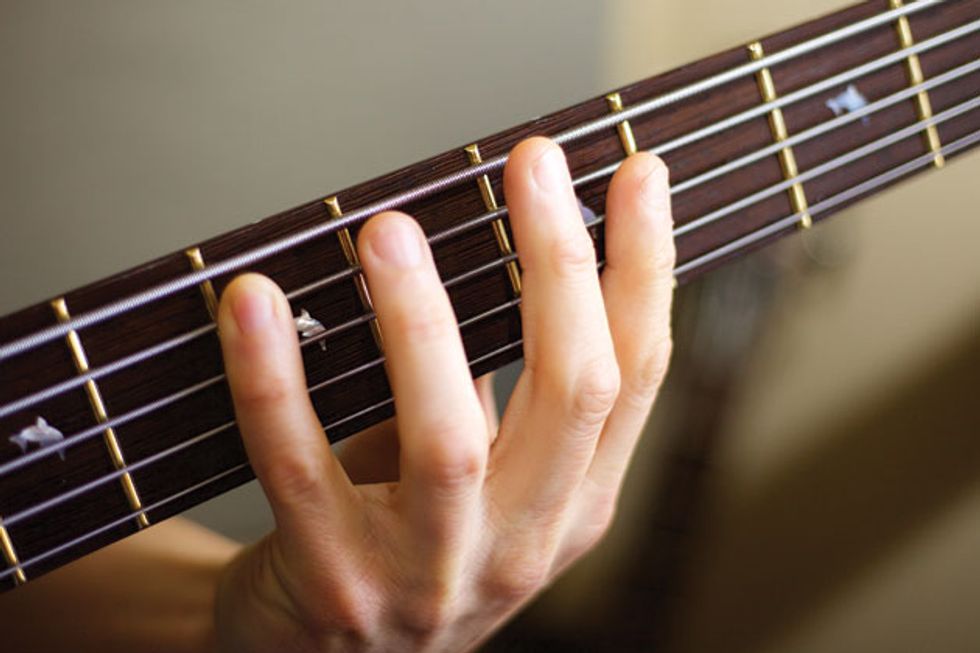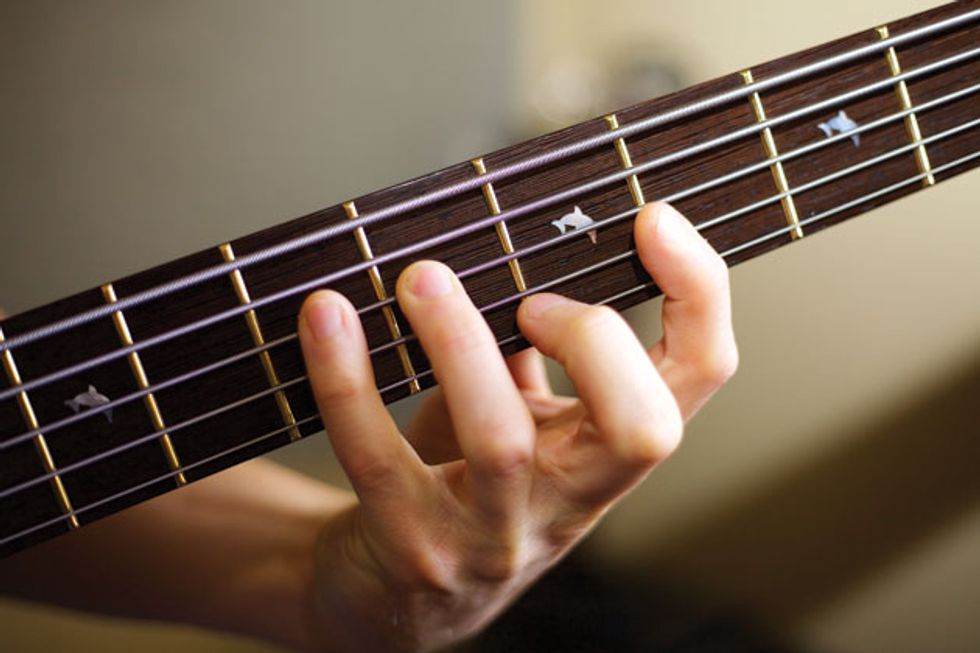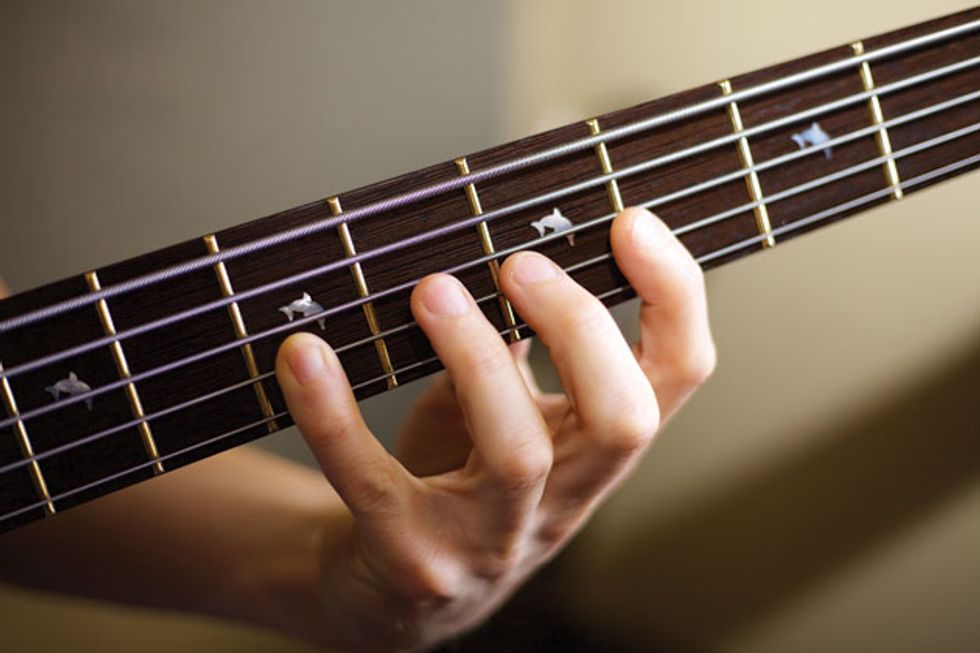Overplaying bassists aren’t typically held in high regard, but there are ways to let your creativity shine through while still maintaining a solid foundation.
In most modern styles of music, our main job as bassists is to provide a basic harmonic foundation. There are several reasons for this, but it’s mostly just because it sounds good. Usually there are other instruments whose job it is to play the colorful chord tones, which can include upper structures of a chord that extend well beyond simple triads. Most non-bassists will agree: One of the worst things you can encounter in an ensemble is a bassist who isn’t holding down the bottom end due to overplaying. Too many inversions or too many notes won’t win you friends.
A happy medium is to aim for rock-solid playing while adding just enough personal touches to make a lasting impact on both the audience and your fellow musicians. So this month, I want to share the fairly basic concept of approach notes through a fun, musical set of exercises. Approach notes will add personality to your chord tones, and if you apply the knowledge tastefully, it can really take your playing to the next level. Let’s use an A7 chord to illustrate the process. The formula for a dominant 7 chord is 1–3–5–b7, relative to a major scale starting from the chord root. For A7, this yields A–C#–E–G.
to the next level.
We’ll start by approaching every chord tone from below.Set your metronome to a comfortable, quarter-note tempo and play these first three exercises as eighth-notes. The first order of business is to approach the root—A. As shown in Photo 1, begin by playing G# on the 4th string with your second finger, and follow that by playing A on the next fret with your third finger. Next up, approach the 3 (C#) from below by playing C (3rd string, 3rd fret) with your first finger, then C# (4th fret) with your second finger.
Root and 3—so far, so good. Now repeat the same concept to approach the 5 (E). Use your third finger for D# (3rd string, 6th fret), and your fourth finger to play the E (7th fret). Finally, approach the b7 (G) by playing F# (2nd string, 4th fret) with your first finger, and G (5th fret) with your second finger. We’ve now approached all four chord tones from a half-step below. Once you’ve played this exercise ascending, reverse directions and descend through the same set of moves.
To approach A7’s root from above, play B using the fourth finger.
The next exercise approaches the target notes from above. As shown in Photo 2, start with your fourth finger on B (4th string, 7th fret), and then play the A—our root—located two frets below with your second finger. To approach the 3 from above, place your second finger on D (3rd string, 5th fret). This requires you to use the same finger you just fretted the 4th string with on thesamefret, so make sure you play the note with the softer, meaty part of your finger. (By flattening out the last knuckle of your second finger, you don’t have to move your fingertip off the A you played before fretting D, and this will keep the whole exercise sounding very legato and relaxed.) Now move down to the 3 by playing C# with your first finger.
To approach the 5, play F# (2nd string, 4th fret) with your first finger, using that knuckle-rolling technique I just described, and then E with your fourth finger (3rd string, 7th fret). Last, approach the b7 by first playing the A (2nd string, 7th fret) and then tagging G two frets below. Use your fourth and second fingers, respectively.
As with the previous exercise, once you’ve reached the last note, flip the pattern around and descend to the low root.
A real ear-bender, the exercise illustrated in the next two photos is my favorite. In it, you’ll approach every chord tone from both above and below. This means the notes will be in groups of three, so set your metronome to a slower quarter-note tempo and play this exercise as eighth-note triplets.
Start with your fourth finger on B (4th string, 7th fret), followed by G# (4th fret) with your first finger, and then A (5th fret) with your second finger. See how that works?
Nailing E—A7’s 5—from D#, a half-step below.
Approach the 3 by playing D, C, and C#—all on the 3rd string—with your third finger, first, and second fingers.
Next move to the 5 by playing F# (first finger, 2nd string, 4th fret), then D# (third finger, 3rd string, 6th fret), and finally E (fourth finger, one fret higher). The last half-step shift is shown in Photo 3.
Approaching G (A7’s b7, played by the second finger) by way of A (fourth finger) and F# (first finger).
Finally, Photo 4 shows the b7 approach that occurs entirely on the second string: A (fourth finger, 7th fret), F# (first finger, 4th fret), and G (second finger, 5th fret).
These exercises can add pizzazz to your bass lines and serve as a great launching pad for soloing, so I hope you’ll find them useful. If you’ve been stuck playing triads, you have now officially been set free.
Watch the lesson:





